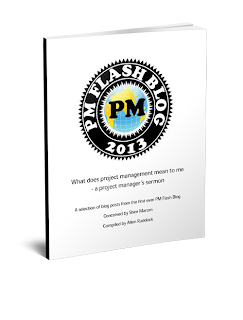One of my Agile Project Management students asked me about stage gates and agile. My first response was this:
But, DSDM is one agile method, among others, that is more oriented to a gated process than say, SCRUM. To see how this could work, take a look at this presentation:
- Agile is not a gated methodology, primarily because scope is viewed as emergent, and thus the idea of pre-determined gate criteria is inconsistent with progressive elaboration and emergence.
- Agile does embrace structured releases; you could put a criteria around a release and use it as a gate for scope to be delivered
- Re budget: agile is effectively 'zero base' at every release, if not at every iteration. You can call the question at these points of demarcation.
- Agile is a "best value" methodology, meaning: deliver the 'most' and 'best' that the budget will allow, wherein 'most' and 'best' is a value judgement of the customer/user.
- Of course, every agile project should begin with a business case which morphs into a project charter. Thus, the epic narrative (the vision narrative) is told first in the business case, and retold in more project jargon in the charter. Thence, there are planning sessions to get the general scope and subordinate narratives so that an idea of best value can be formed.
Read in the library at Square Peg Consulting about these books I've written
Buy them at any online book retailer!
Read my contribution to the Flashblog







